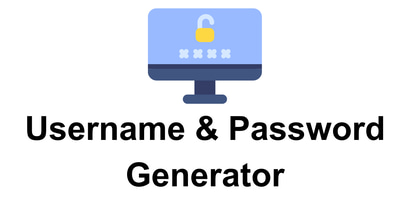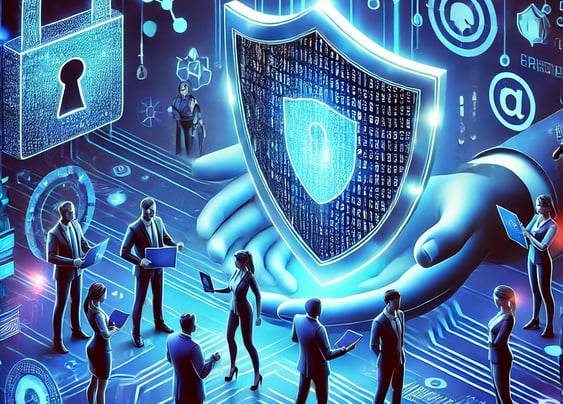How to Securely Store and Manage Your Usernames and Passwords
In today’s digital world, having strong usernames and passwords is only the first step in securing your online identity.
How to Securely Store and Manage Your Usernames and Passwords
In today’s digital world, having strong usernames and passwords is only the first step in securing your online identity. However, if you don’t store and manage them properly, even the most complex passwords can be compromised. Cybercriminals use various tactics to steal login credentials, making it essential to implement smart security practices. In this guide, we’ll explore where to safely store your generated usernames and passwords, best security practices, and tools to enhance your protection.
Why Secure Storage of Usernames and Passwords is Essential
Many users write their passwords down on sticky notes or save them in plain text files, putting their security at risk. A single data breach or compromised device can expose all your login details. Properly securing your credentials reduces the chances of:
Identity theft – Hackers gaining access to your personal accounts.
Financial fraud – Unauthorized transactions from compromised banking accounts.
Privacy breaches – Sensitive emails, documents, and social media accounts being accessed by intruders.
Credential stuffing attacks – Hackers using stolen login details on multiple websites where the same username and password are reused.
To prevent these threats, let’s explore the best methods to store and manage your credentials securely.
Best Ways to Store Usernames and Passwords Securely
1. Use a Password Manager
A password manager is one of the safest and most convenient ways to store your usernames and passwords. These tools securely encrypt and store login credentials, making it easy to retrieve them when needed.
Benefits of Password Managers:
Strong encryption – Your data is stored securely with advanced encryption protocols.
Auto-fill functionality – Automatically fills in login details to reduce phishing risks.
Password generation – Many password managers can generate complex passwords for you.
Cross-device access – Syncs across multiple devices securely.
Popular Password Managers:
Bitwarden (Open-source, free & premium options)
1Password (User-friendly and highly secure)
LastPass (Free and premium plans with cloud storage)
Dashlane (Offers dark web monitoring for leaks)
2. Store Passwords in an Encrypted File
If you prefer not to use a password manager, consider storing passwords in an encrypted file. Tools like VeraCrypt or BitLocker allow you to create secure containers where your passwords are stored safely.
How to Do It Safely:
Use AES-256 encryption for maximum security.
Store the encrypted file on a secure external drive or cloud storage.
Keep a backup in a separate, secure location.
3. Write Them Down – But Securely
If you absolutely must write your passwords down, do so with caution.
Use a notebook stored in a locked safe.
Avoid labeling it as “Passwords” to prevent easy identification.
Never store passwords in your wallet or easily accessible locations.
4. Use Encrypted Cloud Storage
Services like Google Drive, OneDrive, and Dropbox offer encrypted storage options, but they are not foolproof. For added security, use client-side encryption before uploading password files.
Recommended tools for encryption:
Cryptomator (encrypts cloud files locally)
AxCrypt (Easy-to-use encryption for individuals)
5. Secure Backup Solutions
Creating a backup of your credentials ensures you don’t lose access in case of hardware failure or accidental deletion. However, backups should be securely stored using:
Offline USB storage (encrypted and kept in a safe location)
Secure cloud backup (encrypted before upload)
Printed backups in a fireproof safe (for emergencies)
How to Protect Your Passwords from Hackers
Even if you store your passwords securely, they can still be stolen if you don’t take the right precautions. Here’s how to keep them safe:
1. Enable Two-Factor Authentication (2FA)
2FA adds an extra layer of security by requiring an additional verification step beyond just a password. Methods include:
SMS codes (Less secure but better than nothing)
Authenticator apps like Google Authenticator, Authy, or Microsoft Authenticator
Physical security keys like YubiKey (Best protection against phishing)
2. Avoid Using the Same Password Everywhere
If one password is compromised, all your accounts could be at risk. Always use unique passwords for different accounts.
3. Beware of Phishing Scams
Hackers often impersonate legitimate companies to steal login details. Watch out for:
Emails with urgent security alerts or account verification requests.
Fake login pages that mimic real websites.
Suspicious links that lead to credential-stealing websites.
4. Use a VPN on Public Networks
Public Wi-Fi is vulnerable to cyberattacks. Use a VPN (Virtual Private Network) to encrypt your internet traffic and protect your login credentials.
5. Monitor Data Breaches
Check if your credentials have been leaked using websites like Have I Been Pwned? If your email or password appears in a breach, change your password immediately.
Future Trends in Password Security
The landscape of cybersecurity is evolving, and new methods are emerging to replace traditional passwords. Some future trends include:
1. Passwordless Authentication
Instead of passwords, websites are moving toward biometric authentication, such as:
Facial recognition (e.g., Face ID)
Fingerprint scanning (e.g., Touch ID)
Iris scanning for high-security applications
2. Behavioral Biometrics
Future security systems may analyze typing patterns, mouse movements, and behavioral traits to verify identity.
3. Passkeys and FIDO2 Standards
Companies like Apple, Google, and Microsoft are promoting passkeys, which use cryptographic keys stored on devices instead of traditional passwords.
Final Thoughts
Storing and managing usernames and passwords securely is just as important as creating strong ones. Whether you use a password manager, encrypted storage, or a physical backup, always prioritize security best practices. Enable two-factor authentication, stay alert for phishing scams, and monitor for data breaches.
By implementing these strategies, you can ensure your online accounts remain safe from cyber threats, giving you peace of mind while browsing the internet. Don’t wait until a breach happens—take action now to secure your digital identity!


